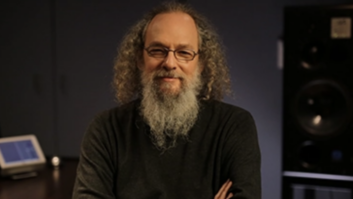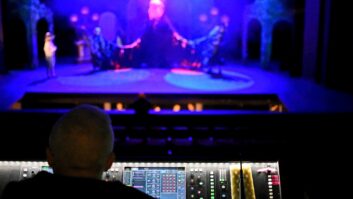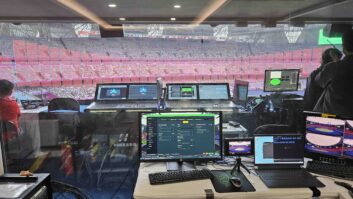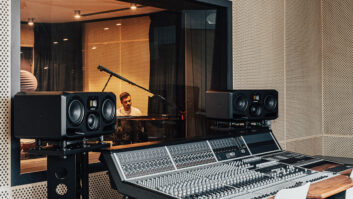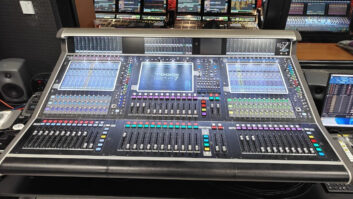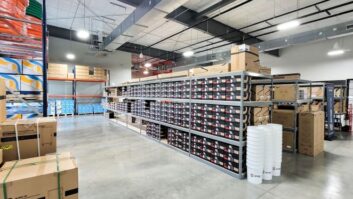With so much digital control in our lives these days, customers expect ‘smarter’ systems and mixing desks are no exception. Leon Phillips of Allen & Heath examines the latest trends.
One of the fundamental advantages of a digitally-managed system is the preset functionality, which enables users to instantly recall a set up, rather than manually configure a console or outboard gear for each application.
The console is a mixing desk surface consisting of multiple input channels with individual controls for gain, equalisation, level and routing to the output mixes. A typical console handling 24 inputs could easily have 600 knobs, switches and faders, any of which, could critically affect the operation of the sound system.
In addition to the mixing console there are numerous devices housed in equipment racks which have to be interconnected between the console and the building’s public address and other systems. This ‘outboard’ gear consists of graphic equalisers, delay lines, FX units, and dynamic processors such as noise-gates and compressors which are normally inserted into the signal path of key input channels. Each piece of outboard gear has its own settings, both manual and programmable, and needs to be coordinated with the mixing console settings to provide a managed sound system for each application.
With a digitally-managed system, even non-technical staff can recall complex operations at the touch of a button, often integrating with other equipment in the venue, such as video, lighting and signalling.
Once a sound is converted from an analogue into digital signal, it can be manipulated using computerised mathematical algorithms operating at a billion times per second to shape and control the sound in ‘real-time’. Digital mixers contain several Digital Sound Processing (DSP) devices to replace the circuitry used in analogue mixers to provide equalisation, dynamics-shaping, and complex routing control. Artificial reverberation or echo-cancelling can be done using DSP.
With DSP, so many functions that traditionally would have been managed using equipment external to the mixer can be provided as a built in suite of tools.
Take delay lines, for example. These are used where it is desirable to alter the length in time that a signal takes to pass through a channel in the sound system; this might be to compensate for the positioning of loudspeakers and the time it takes for sound to travel though air. If the listener hears the same sound source from multiple locations at slightly different times then the result is less intelligible. Delay lines can be inserted into input channels or on to the outputs of the mixing system, then adjusted so that listeners hear the common-source sounds arriving from different parts of the sound system in-time. Digital mixing systems often have delays available on input and output channels, reducing the need for external equipment.
Another example is cross-over: an active device that divides the frequency content of a signal, and splits it into different paths destined for particular sections of the public address system suited for that range of frequencies. The simplest examples send the low frequency content only to the sub-woofers. More complicated devices split the signal into four or five bands of which each section has exact frequency cut-off points and characteristics to match the driver and enclosure of the PA system. This all improves the efficiency and performance of the system.
Another key advantage is reduced wiring and hardware management and costs as DSP-managed systems negate the need for balanced cables running to and from the mixing console, plus mains distribution, rack mount housing, PAT testing and maintenance are minimised.
Mixing systems have to receive inputs from remote locations and outputs need to be managed and distributed to various zones. Using digital technology allows many of these signals to be transported over Cat 5 cable, which is lower cost and more manageable than its copper-based counterpart in analogue. Furthermore, the user is not tied to the mixer surface to make adjustments to the system as this can be done, for example, over a network or Wi-Fi, and if remote control interfaces are to be used, they can connect via Cat 5 at minimal interference to the building structure and architect’s brief.
Smart DSP mixing systems can be password protected from unauthorised tweaking, while network control offers time and labour savings, such as reporting, which can be managed over the network as installers can check on the status of an installed system from the office or at home. Updates to the system can also be done remotely, providing more time, labour and cost savings.
Integration with other systems is very important. RS323 (AMX, Crestron screen-based control systems) MIDI (audio sampler or FX program change) GPIO (micro switch room-dividing, custom paging stations) and TCP/IP communication (use of cost-effective Ethernet LAN technology for equipment connections in buildings) between systems allow for expansion and changes to the customer’s needs instead of having to replace core systems to adapt.
Leon Phillips is product manager with Allen & Heath
An iDR system from Allen & Heath was installed in the Nokia Concert Hall in Tallinn, Estonia
